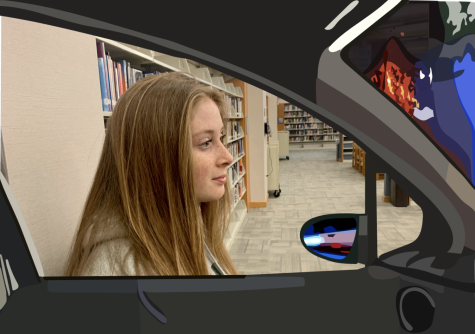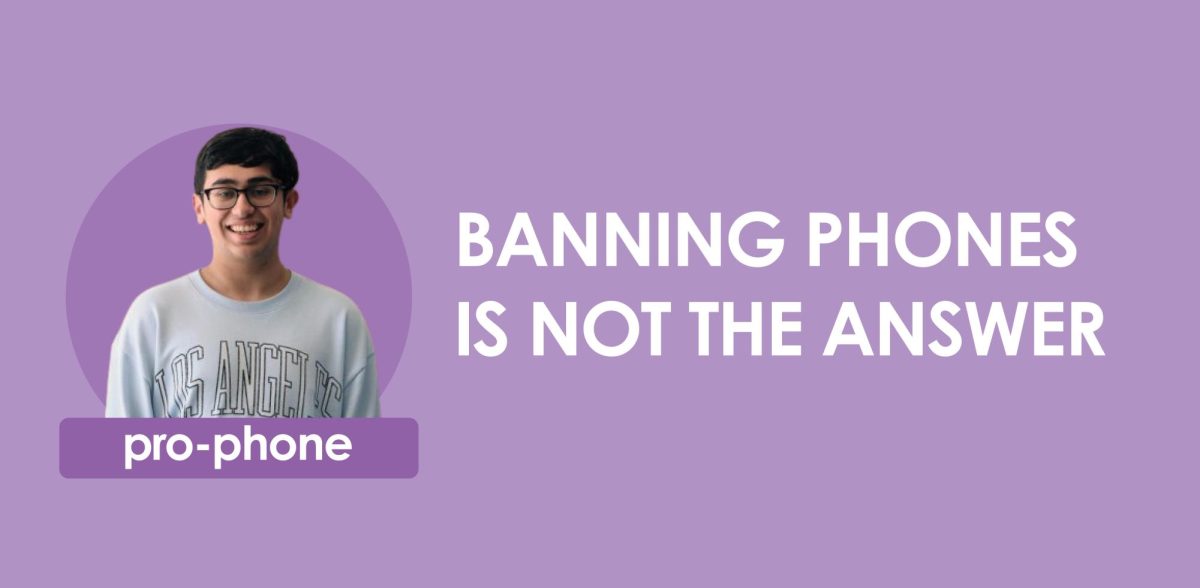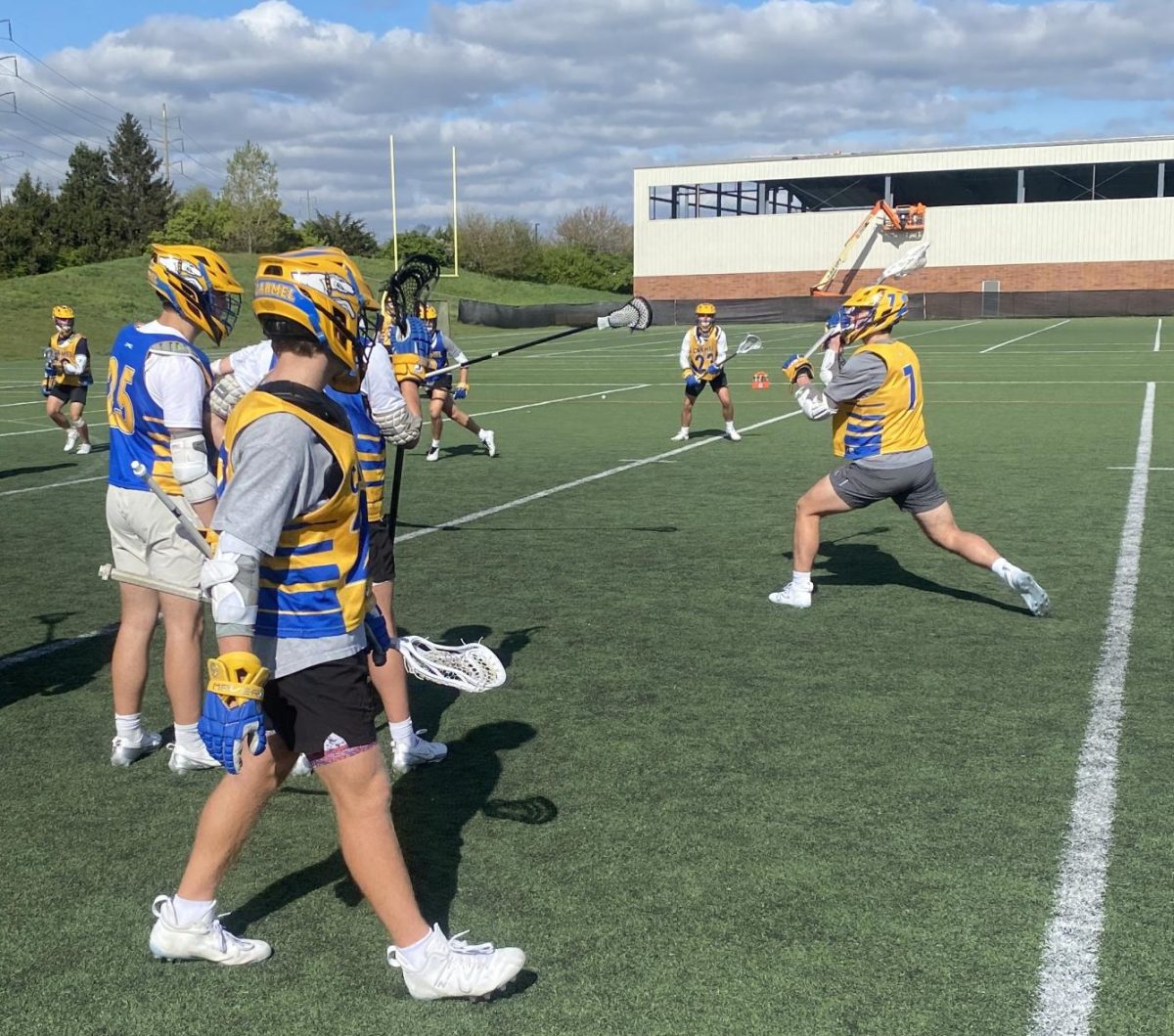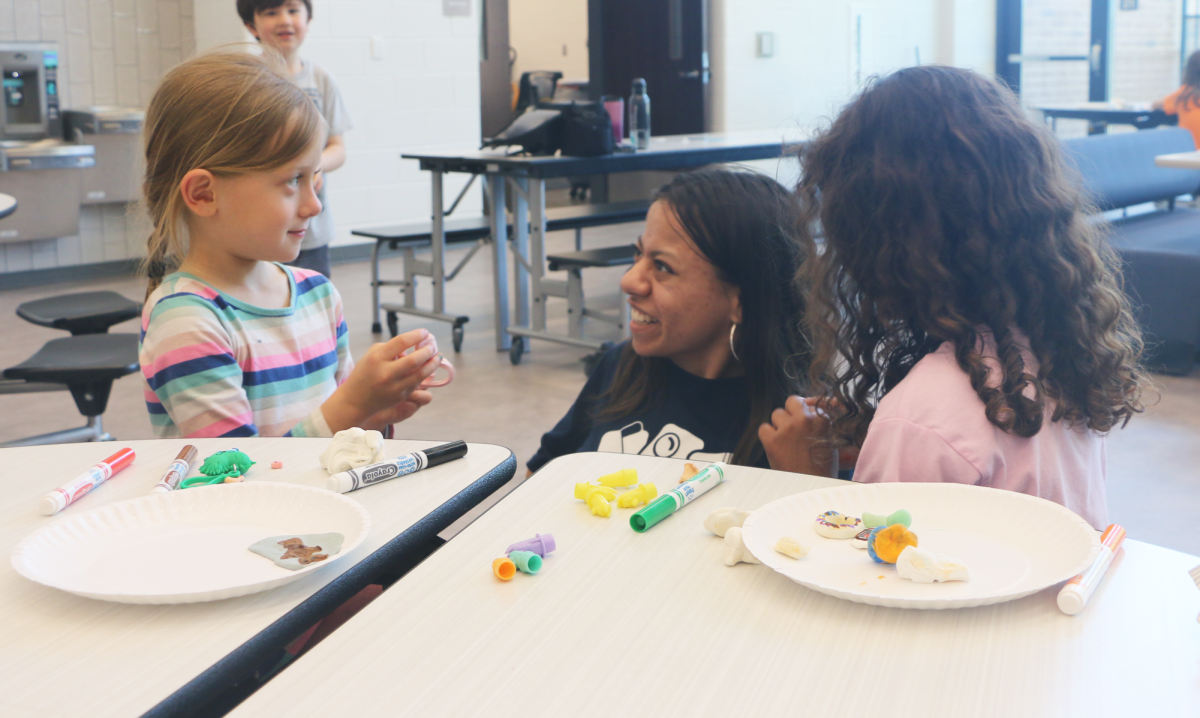Content warning: This story includes references to a car accident and trauma exposure.
Senior Ali Schuman and her mom go to the gym every Friday morning at 6 a.m. However, one morning in April of 2022 was unlike the others.
She said, “We were driving to the gym and came up to an intersection, and we were turning left. The arrow turned green, and we were turning onto 96th Street from Meridian (Street), so it’s a pretty big intersection. A car was coming from the other side and they didn’t stop. They just ran the red light, probably going around 50 miles per hour (and) straight into the front of (our) car. I was sitting in the passenger seat; my mom was driving.”
Fortunately, Schuman said she did not suffer from life-threatening injuries as a result of the accident.
“I had a major concussion, or a Grade 3 concussion. It lasted for a good five months,” she said. “Other than that, I just had some bruises on my arms, (and) I think I had one on my back or something. My mom had some bruises on her legs, but other than that, we were fine.”
Schuman is one of many individuals who have experienced a traumatic event. According to the World Mental Health Survey Consortium, over 70% of survey respondents reported having had trauma or crisis exposure. More specifically, Schuman’s experience is known as a near-miss experience when someone narrowly avoids serious injuries or death.
According to social worker Mary Reese, there are many factors that play into how a near-miss experience can impact someone.
“When it comes to crisis exposure, things like the duration of the event, the predictability of the situation before it occurred and the consequences of the situation can impact how much people are individually affected,” Reese said via email. “Common trauma response symptoms include re-experiencing the trauma, arousal and avoidance. This may include struggles with intrusive thoughts, flash-backs and nightmares.”
Schuman said she has experienced some of those symptoms. For example, she said she avoided sitting in the passenger seat after her accident. As time passed by, however, she said she found a way to conquer this fear.
Schuman said, “Probably after a couple of months, I was just like, ‘Okay, I need to get over it,’ so I just sat in the passenger seat. I am such a backseat driver, so the first time I sat in the passenger seat again I was like, ‘Oh, there’s a car coming. (We have) got to slow down,’ and (I was being) kind of controlling. But, my friends were really understanding about it, so it (was) all good.”
For senior Ishaan Singh, he said while he has not faced the common struggles Reese mentioned, his injuries from his accident helped him recognize his love for music. Singh was hiking at the Grand Canyon National Park when he tripped on some rocks and fell 10 feet.
“I ended up breaking my arm pretty severely and needed to get a metal rod in the upper arm area,” he said. “It’s like that one scene from Harry Potter where his forearm goes completely limp in a quidditch match or something. My upper arm kind of looked like that, if that’s a helpful visualization, so obviously, not great.”
“I have two scars, but beyond a nice story, I think the only impact it has is after the injury I definitely committed myself a lot more to music,” he added. “I didn’t understand how much I enjoyed playing cello and doing things like that, and then being unable to do that for a while was something that (made me) like, ‘Wow, I really miss that,’ and that was something illuminating.”
In fact, Reese said there is often a misconception that everyone who has experienced an unexpected distressing event will develop trauma response symptoms.
She said, “Many individuals (like Singh) are able to recover on their own after a distressing event, while some trauma response symptoms may continue on to a place where the individual meets criteria for (post-traumatic stress disorder) or another mental health disorder.”
In any case, Reese said she encourages students to seek help if their stress becomes an interference with daily activities.
“A certain amount of stress is normal after experiencing a crisis or a difficult time. If you feel that this stress is beginning to impact you daily life either physically, emotionally or both, it is important to reach out and ask for help,” she said. “Our counseling department is a wonderful resource that any student can access. Students can reach out to their social worker or counselor for assistance with learning and utilizing coping skills to manage stress inducing situations.”

In terms of misconceptions, Schuman said many people disregarded her injury and her accident.
“A lot of people didn’t realize how bad it was or how bad my concussion was,” Schuman said. “It was a little annoying at first because something pretty traumatic happened, and a lot of people just either didn’t care or didn’t believe that it happened until I showed them pictures or a doctor’s note. Even then, sometimes (people) were like, ‘Oh, you’re fine.’”
Along those lines, Singh said some parts of his story, such as the fact he was taken out of the canyon by a helicopter, have made people doubt whether he was exaggerating the truth.
“You know, maybe people do think that I’m lying out of my mind when I tell the story, but I’ve never really thought that because when they hear it, they kind of just seem incredulous to begin with,” he said. “My mom has a photo…(of when) they had to get a helicopter and take me in a bag basically and helicopter me out of the canyon. When I said that part, people were like ‘What?’ but then when I show them the photo my mom has, they’re like, ‘Oh my goodness.’
“I don’t think there’s that many people that think I’m lying about it—at least I hope not,” he added.
Reese said she hopes people take time to understand someone else’s situation instead of doubting its validity or disregarding its impact.
She said, “Everyone handles things differently, but I do feel that not being believed about a traumatic situation can devalue the individual who experienced the situation. It would then be easy to internalize the idea that my feelings are not a valid response to what I experienced. (Feeling that way) could negatively impact one’s self-esteem and decrease the likelihood that the individual would reach out for help and support.”
Ultimately, in light of Near Miss Day on March 23, created to commemorate the near collision of an asteroid with the Earth, Schuman said her accident has helped her see the importance of cherishing life. Life, she said, can be unpredictable.
“I think (the accident) just made me realize that life can be cut off at any time without any warning during daily activities or weekly activities. It’s important to cherish every moment and make the best of life,” she said. “I’m going to keep trying to make the most out of every moment because life is pretty short, and things can happen and you don’t always have control over those things.”
To learn more about traumatic stress and the types of support available, click here.






























![Family vlogger controversy, need for content reform [opinion]](https://hilite.org/wp-content/uploads/2024/05/Screenshot-2024-05-14-11.33.37-AM-1200x465.png)




























![Review: Taylor Swift’s new album The Tortured Poets Department is not her best work but is still a brilliant album [MUSE]](https://hilite.org/wp-content/uploads/2024/05/The-Anthology_Cover-1200x675.webp)
![Review: Challengers does it all [MUSE]](https://hilite.org/wp-content/uploads/2024/05/challengers-poster-1200x600.png)
![Review: A House of Flame and Shadow by Sarah J. Maas was a disappointing read [MUSE]](https://hilite.org/wp-content/uploads/2024/05/house-of-flame-and-shadow-feature.png)
![Review: Conan Gray’s new album, “Found Heaven”, is a refreshing twist on modern music [MUSE]](https://hilite.org/wp-content/uploads/2024/05/Screenshot-2023-10-31-at-16.01.05.webp)
![Review: “Bodies, Bodies, Bodies” is the quintessential Gen-Z movie [MUSE]](https://hilite.org/wp-content/uploads/2024/05/Screenshot-2024-05-15-140618.png)
![Review in Print: Maripaz Villar brings a delightfully unique style to the world of WEBTOON [MUSE]](https://hilite.org/wp-content/uploads/2023/12/maripazcover-1200x960.jpg)
![Review: “The Sword of Kaigen” is a masterpiece [MUSE]](https://hilite.org/wp-content/uploads/2023/11/Screenshot-2023-11-26-201051.png)
![Review: Gateron Oil Kings, great linear switches, okay price [MUSE]](https://hilite.org/wp-content/uploads/2023/11/Screenshot-2023-11-26-200553.png)
![Review: “A Haunting in Venice” is a significant improvement from other Agatha Christie adaptations [MUSE]](https://hilite.org/wp-content/uploads/2023/11/e7ee2938a6d422669771bce6d8088521.jpg)
![Review: A Thanksgiving story from elementary school, still just as interesting [MUSE]](https://hilite.org/wp-content/uploads/2023/11/Screenshot-2023-11-26-195514-987x1200.png)
![Review: When I Fly Towards You, cute, uplifting youth drama [MUSE]](https://hilite.org/wp-content/uploads/2023/09/When-I-Fly-Towards-You-Chinese-drama.png)
![Postcards from Muse: Hawaii Travel Diary [MUSE]](https://hilite.org/wp-content/uploads/2023/09/My-project-1-1200x1200.jpg)
![Review: Ladybug & Cat Noir: The Movie, departure from original show [MUSE]](https://hilite.org/wp-content/uploads/2023/09/Ladybug__Cat_Noir_-_The_Movie_poster.jpg)
![Review in Print: Hidden Love is the cute, uplifting drama everyone needs [MUSE]](https://hilite.org/wp-content/uploads/2023/09/hiddenlovecover-e1693597208225-1030x1200.png)
![Review in Print: Heartstopper is the heartwarming queer romance we all need [MUSE]](https://hilite.org/wp-content/uploads/2023/08/museheartstoppercover-1200x654.png)






















![Review: “Ginny & Georgia” is a dramatic and poorly made emotional rollercoaster–and I loved it anyway [MUSE]](https://hilite.org/wp-content/uploads/2024/03/ginny-and-georgia-season2-main-be37bbb9487a41e88b3f66c3baacd5c3-300x177.jpg)
![Review: Witch Hat Atelier is a masterpiece in art and world-building, but the story has only begun [MUSE]](https://hilite.org/wp-content/uploads/2024/01/unnamed-211x300.png)
![Review: “Mysterious Lotus Casebook” is an amazing historical Chinese drama [MUSE]](https://hilite.org/wp-content/uploads/2024/03/0-300x170.webp)
![Review: “A Little Life” by Hanya Yanagihara is the epitome of a heartwrenching masterpiece [MUSE]](https://hilite.org/wp-content/uploads/2024/01/unnamed-5-300x200.png)

